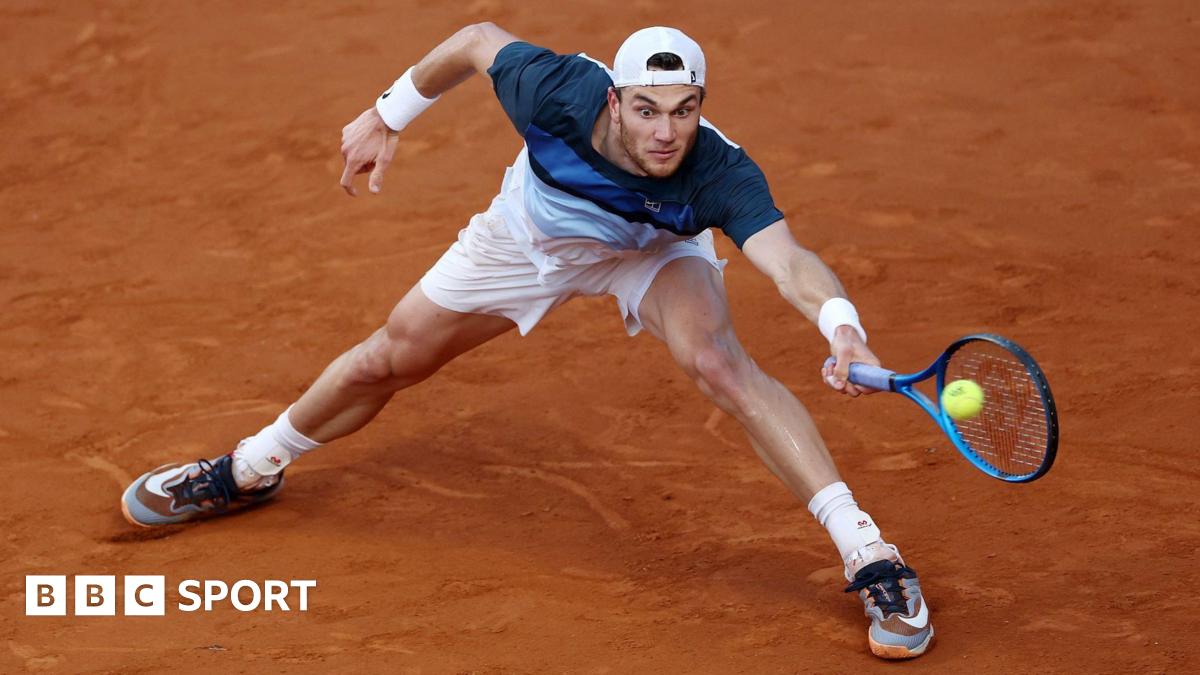Tennis' French Open is days away - what do players need to succeed on clay?

Quick Read
Tennis' French Open is days away - what do players need to succeed on clay?
Clay court tennis is notoriously slow, demanding a different approach than playing on grass or hard courts. The surface's unique characteristics require significant adaptability in technique, strategy, and physical conditioning. It significantly affects ball bounce and speed, impacting serves and rallies. Mental toughness also matters due to the longer rallies and grueling physical demands.
**Your Noyzy News Article:**
## Conquer the Clay: What it Takes to Triumph at Roland Garros
The French Open, the prestigious clay-court Grand Slam tournament, is just around the corner, and the world's top tennis players are gearing up for the grueling battles ahead. But what separates the champions from the also-rans on this notoriously demanding surface? It’s more than just a killer serve or a wicked forehand; conquering the clay requires a unique combination of physical prowess, strategic brilliance, and unshakeable mental fortitude. Let's delve into the key elements that determine success at Roland Garros.
### The Clay Court Conundrum: A Unique Challenge
Unlike the faster surfaces of grass and hard courts, clay presents a unique set of challenges. The slow, heavy surface dramatically alters the ball’s trajectory and speed. This means the classic "serve-and-volley" strategy often employed on grass courts is largely ineffective. Instead, extended rallies, often characterized by intense baseline exchanges, become the norm. This demands a different type of game altogether, one requiring stamina, precision, and tactical adaptability.
### Mastering the Mud: Essential Technical Adjustments
Adapting one's technique to the clay's slower pace is paramount. Players need to develop a deep understanding of how the ball will behave upon contact with the surface. This understanding translates into several key adjustments:
* **Topspin is King:** The slow, heavy clay absorbs some of the ball's speed, meaning players heavily rely on topspin to generate power and keep the ball in play. Generating ample topspin requires a specific swing path and technique that players must master.
* **Slide, Don't Run:** Clay courts demand the mastery of sliding technique, allowing players to cover the court efficiently and make quick changes in direction. Slipping on the clay is not merely a stylistic choice; it's a crucial aspect of effective movement.
* **Strategic Shot Selection:** Extended rallies require a more patient and measured approach. Players must carefully select their shots, picking their moments to attack and employing defensive tactics to remain in the point.
### The Physical Demands of Clay Court Tennis
Playing on clay is physically demanding, requiring a significant level of endurance and strength. The slow pace necessitates longer rallies, putting immense strain on the player's muscles and cardiovascular system. Moreover, the constant sliding and shifting movements place significant stress on joints. Top players often undergo specialized training to build the specific muscle groups needed for sustained performance on clay. This includes dedicated work on:
* **Leg Strength and Endurance:** The constant movement, sliding, and quick changes of direction necessitate powerful and resilient legs.
* **Core Stability:** A strong core is essential for maintaining balance during aggressive movements on the slippery clay.
* **Cardiovascular Fitness:** The longer rallies require exceptional endurance to withstand the sustained physical exertion.
### The Mental Game: Staying in the Fight
Mental fortitude plays a pivotal role in clay court success. The extended rallies can be mentally draining, as players must maintain focus and concentration throughout long, intense points. The physical demands also contribute to mental fatigue, requiring athletes to possess a strong mental game to overcome adversity and fight through challenging moments.
* **Patience and Perseverance:** Clay court tennis requires patience. Players must be willing to grind through long rallies and maintain their focus even when opportunities seem few and far between.
* **Adaptability:** Players must be adept at adjusting their strategies in response to their opponent's style and the specific conditions of the match.
* **Resilience:** The mental strength to bounce back from setbacks is crucial, as extended matches on clay can be emotionally and physically draining.
### The Final Serve: Ready for Roland Garros
The French Open is a true test of a tennis player's all-around abilities. Success requires not only exceptional talent but also meticulous preparation, focusing on specific technical adaptations, rigorous physical conditioning, and unwavering mental resilience. As the tournament approaches, we can expect exhilarating matches filled with dramatic rallies, strategic brilliance, and displays of incredible stamina. May the best players, both physically and mentally prepared, conquer the clay!
```
```
```
```
```
```
```
```
```
```
```
```
```
```
```
```
```
```
```
```
```
```
```
```
```
```
```
```
```
```
```
```
```
```
```
```
```
```
```
```
```
```
```
```
```
```
```
```
```
```
```
```
```
```
```
```
```
```
```
```
```
```
```
```
```
```
```






